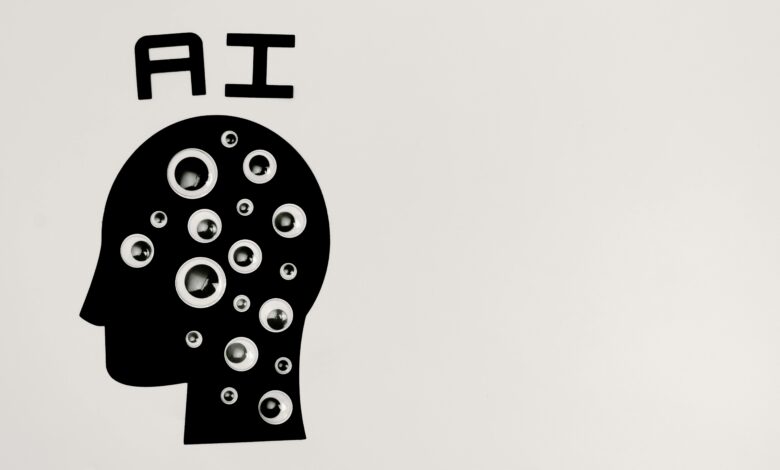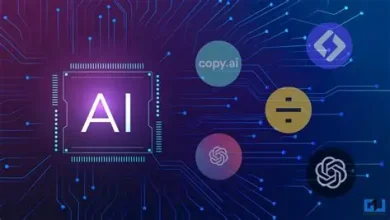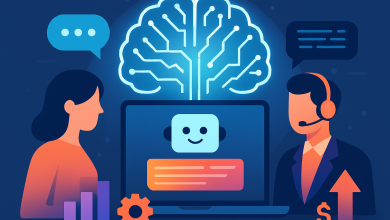
AI has been called so many things. A disruptor, a game-changer, the future of work, but from what I’ve seen leading technology transformations across industries, the real risk isn’t that AI is too powerful; it’s that we overuse it in all the wrong places.
In the rush to integrate generative tools into every corner of business and learning, many organisations are missing the point. Instead of asking where AI can make us better, we’re asking what it can do for us. That subtle shift in mindset is already having very real consequences. When we lean too heavily on AI, we risk losing the human skills that matter most (critical thinking, creativity, and collaboration). The goal shouldn’t be to hand over work to AI. It should be to elevate what people do best.
What AI Gets Right, and Where It Still Falls Short
There’s no denying that AI has opened new doors. I’ve seen real progress in how we use it to support training and workforce development. It can help personalise learning paths, spot where someone is struggling before they fall behind, and free up people’s time from repetitive tasks so they can focus on deeper thinking.
In the workplace, these tools can surface useful insights, keep projects moving, and help professionals in complex roles focus on judgment, not admin. And in education, where I work now, AI has proven its value in very specific ways. Speech recognition tools help language learners improve pronunciation and practice without fear of embarrassment. These are smart, targeted uses of AI that genuinely support people in becoming better learners and professionals. But these examples are exceptions, not the rule. In many cases, AI is being thrown at problems without clear goals. The result is often more content, more reports, more dashboards. But more doesn’t mean better. When the output is unfocused or low quality, it still needs to be reviewed, edited, and explained. We’ve simply moved the burden to another part of the workflow. Too often, the shiny promise of AI hides a lack of strategy. Without purpose, these tools don’t solve problems, they amplify them.
Working with AI, Not for It
One of the biggest mistakes I see is treating AI as a replacement for skilled professionals rather than a partner. Especially in high-trust, high-skilled environments like education, this is a critical error. AI cannot replace a teacher who can read a student’s frustration, adapt their approach on the fly, or spark curiosity with a single question. It can support them, yes, but it cannot replace them. The same goes for any profession that relies on judgment, empathy, or experience. When companies try to cut corners by using AI in place of people, they often find the results don’t hold up. The systems often lack context, the nuance is lost, and the damage can be hard to undo. That’s why the most successful use cases I’ve seen come from teams who treat AI as a tool, not a solution. They build it into their workflows with intent. They know what problem they’re trying to solve, and they keep humans in the loop to provide oversight, direction, and values.
Training People, Not Just Models
There’s been a lot of talk about reskilling in the AI age, and rightly so. The nature of work is changing fast, but many organisations are still approaching upskilling the wrong way. They buy platforms or roll out generic courses and hope for transformation. What they get instead is low engagement, minimal retention, and no meaningful change. Digital learning has enormous potential, but only when it’s designed around how people actually learn. That means using AI to personalise, yes, but also to prompt reflection, encourage effort, and support real progress, not just box-ticking.
When it works, the impact is powerful. We’ve seen learners thrive when they’re supported by the right mix of structured content, human coaching, and AI insights. But it takes time, commitment, and above all, a focus on people, not technology.
Cutting Through Noise
The hype around generative AI is loud, for good reason, because the tech is impressive. However, many companies are falling into the same trap we’ve seen before with past innovation cycles. They adopt tools without a clear understanding of what they’re for. They look for productivity gains without thinking about what kind of work should be done in the first place. The result is noise, confusion, and often wasted investment.
Good technology should bring clarity. It should support better decisions, not create more dashboards. It should help people feel more empowered, not more replaceable.
The companies that will succeed in this new era aren’t the ones that adopt AI fastest. They’re the ones that use it most thoughtfully. They will ask harder questions. Where does this add value? Where does it create risk? What do our people need to succeed, and how can AI help?
That’s the future I want to help build. One where AI isn’t a shortcut, but a partner. Where we sharpen our thinking, not surrender it. Human intelligence should remain at the centre, shaping the tools we build, the decisions we make, and the future we create.





